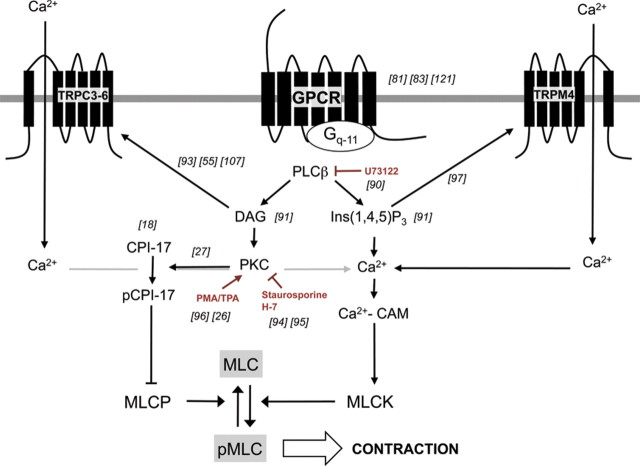Figure 3.
Implication of the Gq-11 transduction pathway in the myogenic process. There is a strong rationale regarding the participation of the different elements of the Gq-11 pathway in MT. Pharmacological, genetic, and electrophysiological approaches allowed to highlight that both intracellular Ca2+ stores mobilization, Ca2+ entry through TRP channels, and calcium facilitation pathway can be triggered through Gq-11 pathway activation. Abbreviations: CPI-17 indicates 17 kDa protein kinase C substrate phosphatase inhibitor; DAG, diacylglycerol; MLC, 20 kDa myosin light chain; MLCK, 20 kDa myosin light chain kinase; PKC, protein kinase C; PMA, phorbol 12-myristate 13-acetate; Staurosporine: [9S-(9α,10β,11β,13α)]-2,3,10,11,12,13-H exahydro-10-methoxy-9-methyl-11-(methylamino)-9,13 -epoxy-1H,9H-diindolo[1,2,3-gh:3′,2′,1′-lm]pyrrolo[3,4-j][1,7]benzodiazonin-1-one, protein Kinase C inhibitor. TPA, 12-O-tetradecanoylphorbol-13-acetate; TRP, transient receptor potential channel. U7122: 1-[6-[[(17β)-3-Methoxyestra-1,3,5(10)-trien-17-yl]amino]hexyl]-1H-pyrrole-2,5-dione, phospholipase C inhibitor.

